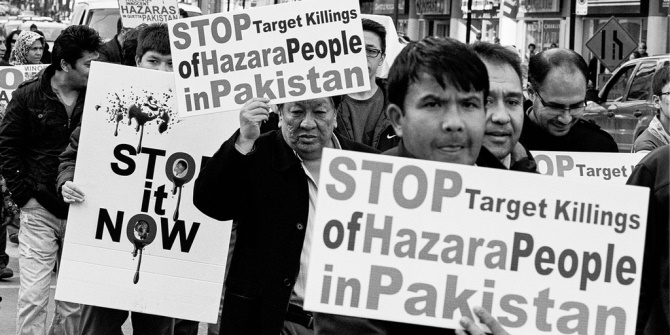 Whilst the people and the government of Bangladesh have set a shining example for the world in terms of offering sanctuary to the Rohingya, David Lewis assesses the potential repercussions on the immediate area and beyond for this act of generosity.
Whilst the people and the government of Bangladesh have set a shining example for the world in terms of offering sanctuary to the Rohingya, David Lewis assesses the potential repercussions on the immediate area and beyond for this act of generosity.
Since August 2017 hundreds of thousands of people from the Rohingya minority have been forced to flee Myanmar into the Cox’s Bazar area of south-eastern Bangladesh, following a horrific campaign of government-led violence that the UN Commissioner for Human Rights has warned could be judged a case of genocide.
This recent event has been by far the largest movement of Rohingya into Bangladesh, but the issue is far from new. The need for Bangladesh to provide shelter to refugee Rohingya has been a recurrent one at least since the 1962 military coup that brought the army to power in Burma. Smaller influxes have taken place in 1978, 1991-2 and 2012.
There is an uneasy relationship between these culturally related yet distinct incomers and the wider Bangladesh population. But the people and the government of Bangladesh have set a shining example for the world in terms of offering sanctuary to the Rohingya, whose condition and stories of state-sponsored violence are reported to have shocked even Bangladesh’s hardened border guards as they entered the country.
Recently, attention has rightly been mainly focused on the plight of these almost a million forcibly displaced people, now living in makeshift shelters near the town of Cox’s Bazar, a small fishing community and Bangladesh’s main beachside tourist destination.
As the recent House of Commons International Development Committee report points out, the conditions of violence, squalor and insecurity being endured by the Rohingya people (now the inhabitants of what is probably the world’s largest refugee camp) will become even worse unless proper preparations are made for the coming monsoon rains. These threaten to destroy their makeshift shelters, many of which are located on recently deforested hill slopes.
But the Rohingya crisis also raises some worrying issues for Bangladesh’s own fragile politics economy and society. Few observers now believe that there is any realistic chance for the refugees to return to Myanmar in the foreseeable future, as was confirmed by Ursula Mueller, the UN Assistant Secretary-General for Humanitarian Affairs on a recent visit to Myanmar. Moreover, there are many people who increasingly believe they will never be able to do so.

A Rohingya youth walks along the outskirts of Balukhali camp, Cox’s Bazar. Photo credit: David Lewis.
First is the economy. While international support has cushioned some of the initial costs to the government of hosting the refugees, the longer they stay the more of these costs the government will have to shoulder. The extent will only become apparent when the hundreds of foreign aid workers and organisations have moved on. Furthermore, the presence of the Rohingya is impacting dramatically on the local economy of the area. As aid money and international humanitarian personnel have poured in to the area, the price of essential goods (such as basic foodstuffs) in the local market has skyrocketed. At the same time, local wages have become depressed, with Rohingya willing to work for half or even one third of the local daily unskilled wage rate.
There are also fears that the Bangladesh’s increasingly important tourist industry – which is centred on Cox’s Bazar beach not far from the Rohingya camps – could easily become vulnerable if the local area becomes unstable. This fear stands in stark contrast to Myanmar’s own tourist industry, which appears to be largely unaffected by the crisis.
Second are the reports of growing problems of crime and security. The government and army have been widely praised for their efficient work in dealing with the crisis, and achieving a measure of order and stability in an impressively short time. But there are reports of growing problems both inside and outside the camps. Occasional cases of intra-Rohingya violence have led to the need for additional policing being put in place. The camps serve as a magnet for people smugglers, sex traffickers, and drug dealers.
A major worry is the possibility that Rohingya youth, traumatised and with little to do, who are not allowed into local schools, and who have recently suffered violent discrimination on the basis of their religion, could be easy fodder for local and/or international Islamist recruiters. Bangladesh is still recovering from its own recurrent militancy problems that flared up again during 2016 with several attacks, including an unprecedented murderous attack on a restaurant in Dhaka’s diplomatic zone.
There are already a few reports of Rohingya leaving the camps other parts of the country, such as Rohingya arrested in Khulna for trying to illegally obtain a Bangladesh passport.
Third, there are the political risks. Prime Minister Sheikh Hasina’s ruling Awami League party is criticised by many citizens as having become increasingly authoritarian in its determination to hold onto power. Some have accused her government of having undermined democratic institutions, appeased both military and religious interest groups, as well as of narrowing the space for independent civil society and press.

There is now a severely weakened political opposition and its main leader Khaleda Zia recently jailed on corruption charges. With a general election due to be held by the end of the year, the country is braced for more of the instability that has often characterised elections.
There are international dimensions to these political risks too, with India and Bangladesh at loggerheads over a common border characterised as one of the world’s worst in terms of smuggling, trafficking and killings by Indian border guards. The Indian government, worried about the presence of militant groups on its borders, will also be concerned that some Rohingya have been caught illegally entering India through Bangladesh.
Despite ongoing negotiations between the governments of Bangladesh and Myanmar, it was recently announced that fewer than 400 Rohingya have been given permission by the Myanmar regime to return (though it was not confirmed whether these people actually wished to return). With no realistic prospect for these refugees to go home, many pressing questions remain unanswered for Bangladesh. Will the Rohingya continue to be forced to remain in the camps? Will the government need to accept that they are in all probability in the country to stay? Who will pay the bill? Should the Rohingya now be dispersed around the country and absorbed into Bangladesh’s own population of 163 million people?
Bangladesh Prime Minister Sheikh Hasina’s spectacular act of generosity to the Rohingya brings high risks for a small South Asian country that has a fragile economy, a brittle political system, one of the highest population densities in the world, and remains massively vulnerable to the damaging effects of global climate change.
Note: This article gives the views of the author, and not the position of the South Asia @ LSE blog, nor of the London School of Economics. Please read our comments policy before posting.
About the Author
 David Lewis recently visited Cox’s Bazar. He is professor of Social Policy and Development at the London School of Economics and a member of the faculty advisory group of the LSE South Asia Centre. David is also regular contributor to the South Asia @ LSE blog. View more of his posts here.
David Lewis recently visited Cox’s Bazar. He is professor of Social Policy and Development at the London School of Economics and a member of the faculty advisory group of the LSE South Asia Centre. David is also regular contributor to the South Asia @ LSE blog. View more of his posts here.








Thanks David,
I see you have talked the core issues and raised some vital questions : what is to be done, and who will keep steering to solve the multifaceted problems, and how?
What is to be done? I think the government should do two things: (i) consult with its citizens openly and try to build consensus around a strategy for better accommodating the Rohingyas, at least for the short to medium term; (ii) work with the international community to build the legal case to prosecute the Myanmar government under international human rights law for genocide.
Hi mates, its great piece of writing regarding cultureand completely defined, keep it up all the time.
Thank you for your kind words.